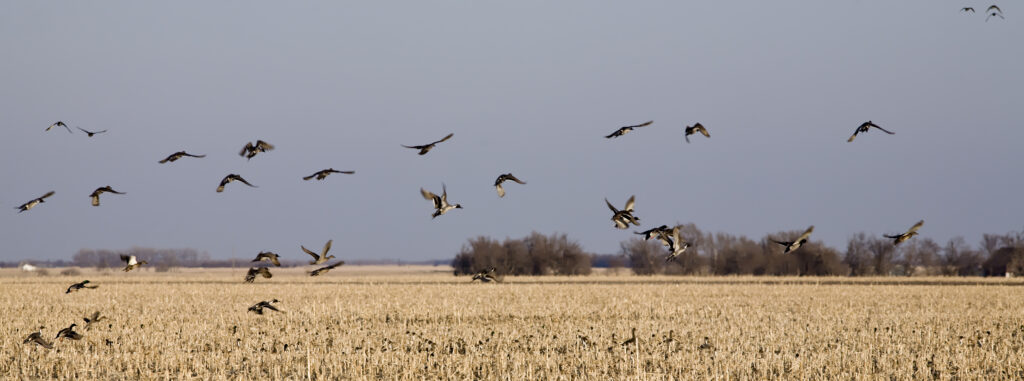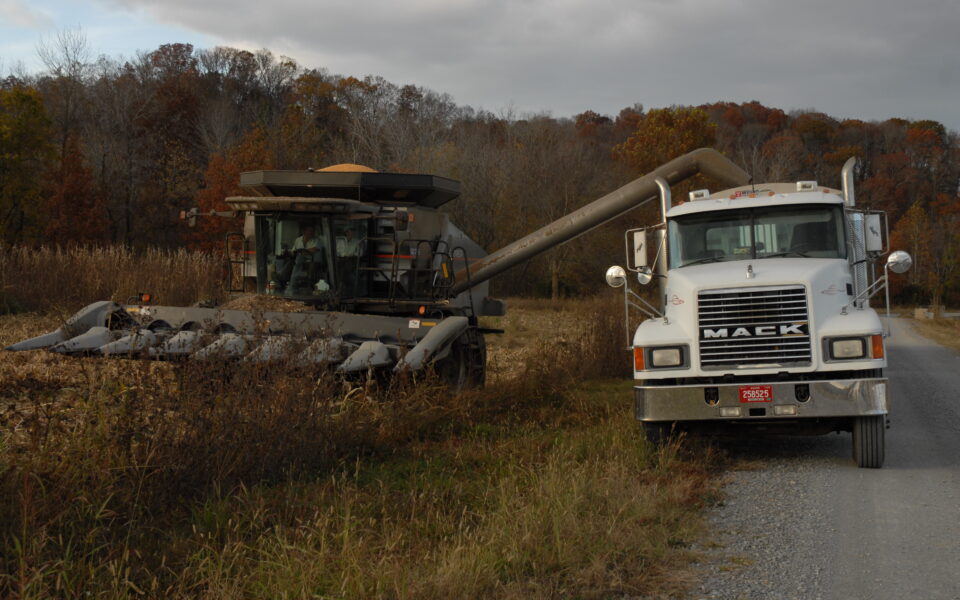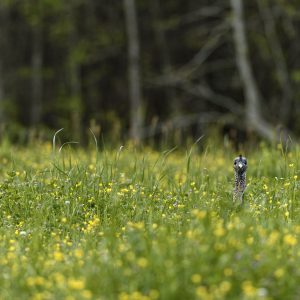Depending on where you are located, using corn for bait, for supplemental food, or planting it in food plots can get different reactions, not only from the public but from hunters as well. For both wildlife and people, it has a wide range of benefits, but have you ever thought about corn, its history, and all the different varieties?
Corn is a staple in America’s diet and it’s a staple for gamekeepers providing a standby for supplementing food for wildlife on your property. Historically corn was instrumental in the early expansion of Native Americans as they traded this nutritious grain across America. They referred to corn, squash, and beans as the “three sisters,” and following European settlement, it was not long before corn was shipped back to Europe.
The history is interesting and depending on which reference you read, corn was believed to have been domesticated in Central America around 10,000 years ago by crossing two species of plants. Genetic mapping has positively identified one of these plants as teosinte. The other plant is believed to be eastern gamagrass. On their own, neither species resemble corn nor did these plants produce much seed, however, when gamagrass and teosinte were combined, the result was corn. It took years of selection to develop the small two-inch teosinte ears, which produced only a dozen kernels into the ears of corn we have today, which have over 500 kernels.
Today, the availability and capability of corn is overwhelming. Gamekeepers shopping for this year’s food plot mix have hundreds of choices, so you should understand basic terminology when describing varieties of corn on the market.
Open Pollinated Corn
Originally, all corn was “open-pollinated.” This means the plant produces seeds naturally and each seed planted produces plants identical to the parent. Gamekeepers will find dozens of open-pollinated corn varieties still on the market. One is Reid’s Yellow Dent, developed in the 1840s. For hundreds of years, little changed with corn, and into the 1930s farmers were still having to save their best seed to replant the following spring.
As certain characteristics were discovered and isolated, new varieties were gradually developed and many are still carried on today. Open-pollinated corn is also referred to as “Heirloom” seed and some varieties remain popular because seed remains true and can be passed down or traded. Additionally, it is believed that “open-pollinated” remains the most genetically diverse.

Hybrid Corn
Hybrid corn is the product of controlled pollination from two types of corn resulting in a better-quality seed. Developing hybrid corn began in 1908 but it was not until 1926 that commercial efforts got underway. Corn was one of the first crops to be marketed as a hybrid.
Dr. Chad Lee at the University of Kentucky, said, “Farmers were skeptical of changing from open-pollinated corn to hybrids – it was the first time they had to buy seed. It finally took the “Dust Bowl,” one of the most severe droughts in the U.S. history, to convince farmers that hybrids were more drought-resistant.”
Once hybrid corn came on the scene, bushels per acre began increasing. Lee added, “A lot of things happened in the 1940s that increased yields including new knowledge about soil nutrients, fertilization, insect, and weed control.” Unlike open-pollinated seeds, you cannot replant hybrid seeds and get similar results. However, hybrid corn was producing seeds that produce higher yields, better taste, and more favorable traits. If you plant seed produced on hybrid corn you will have a mixture of results with a small percentage of the same traits which results in 25% of the crop imaging the original female plant, 25% like the original male plant, and 50% of plants identical to the original offspring. This is the reason for buying seed each year to maintain maximum production.
Genetically Modified Organism (GMO)
Agriculture technology is advancing quickly with discoveries about seed genetics, insect pests, and soil chemistry. Corn is one of the most used and researched seeds/plants with 90% of all farms using Genetically Modified Organism seed or GMO seed.
GMO seed production started around 1996 and it has been on a steady increase. Lee said, “It’s the most expensive seed, but more efficient because GMOs simplify weed and insect control.” Because of this simplicity, farmers are rapidly switching from hybrid to GMO varieties.
Today’s GMO seed combines favored hybrids and with selected genetic characteristics. While expensive, these seeds have reduced input costs including reduced insecticides and herbicides applications.
One of the most popular, Bt-corn. The Bt stands for the natural bacterium Bacillus thuringiensis.
This natural bacterium normally found in soil has been an important biological pesticide since the 1920s. And to make things a little more confusing Bt is a transgenic seed meaning genes are artificially inserted into the plant rather than through pollination.
Bt-corn helps protect plants by having this bacterium in different parts of the plant. As insects consume the plant, this protein must be ingested where within minutes the protein will bind to the gut wall causing the insect to stop feeding.
“Bt” can be used instead of normal spraying of chemicals which requires precise timing. If you fail to catch the insect at the correct time or spray at the wrong stage of the insect’s development, additional broad application spraying will be required. When using Bt-corn, specific pests such as the European Corn Borer are targeted without spraying.
It was not until 2009 that researchers fully mapped out the genetic structure of corn. During this process, scientists found 32,000 genes scattered through corn’s 10 chromosomes. Compare this to humans who have 20,000 genes dispersed in 23 chromosomes (a human cell contains 23 pairs of chromosomes totaling 46). With this new technology, plant breeders can now select traits they want or do not want. Lee said it takes thousands of attempts and testing to insert a gene into the corn but once researchers find one that works, they start developing plants to accumulate seeds. Bt-corn is an example of this process.
Corns Impact on Wildlife
Well, it not might be what you expect. If you are raising corn to feed wildlife, think about having 160 bushels per acre rather than 30-40 per acre that farmers were averaging in the 1950s. Today this rate continues rising. In 2015 one farmer produced a record 523 bushels per acre!
Efficiency is the name of the game in farming and GMO crops, plus increased knowledge of soil management along with improved harvest machinery, all increase productivity.
Migratory waterfowl could well be on the “short end” in some locations. Waterfowl are highly dependent on corn because it is high in carbohydrates. Along the flyways, waterfowl hunters will notice ducks stopping off in a harvested corn fields picking up waste grain, not to mention deer and turkey also spending time on harvested fields gleaning leftover grain. Various wildlife species are accustomed to utilizing this resource especially as cold fronts or snowstorms move in.
This waste grain has always been such an important staple along the flyways that the North American Waterfowl Management Plan recognizes its importance to waterfowl as birds migrate along flyways. In addition to food provided at each state WMA and National Wildlife Refuges, residual waste grain on private farms along flyways was always “a given,” but this is no longer the case.
The average amount of residual corn left behind in each field no longer holds true and while “yield per acre” continues increasing, the amount of seed remaining on the ground is decreasing. What has happened? One example; corn plants are now more uniform, making harvest easier, and characteristics from recessive genes causing early seed drop is one of several traits that have been eliminated. Also, harvesting equipment is much more efficient and becoming more so every year.
Gamekeepers can benefit by planting food plots for resident and migratory wildlife. Since migration is so stressful on waterfowl, we should also support local WMAs or refuges in efforts to maintain high-energy foods for their stopovers along flyways.

Corn for Food Plots
According to Professor, and IPM Coordinator, Scott Stew- art, from the University of Tennessee, if you are planting corn food plots, earlier is better. “Insect problems can be worse in food plots because they are planted later… and the later you plant, the greater the insect problems generally become.” Fall army worms, root borers, are examples of pests farmers contend with. Scott added; that these insects tend to hit corn crops while in the “tassel stage” and this is typically a difficult time to treat the crop. “Bt technology has been a nice fit in these cases.
The question, if you need to plant early, what is that date? This all depends on your location. Check your local extension office for the best dates for corn in your county. From a food plot standpoint, there can be issues with early corn, including “standability” causing corn to fall over and rot before wildlife will need it.
And here is where you need to do some research on which corn to use. As an example, in 2016 the University of Kentucky tested over 140 varieties of corn and other states tested more! State extension services publish annual variety trials each year helping farmers determine which variety is best. These trials will list yield, lodging scores (premature breakage), whether it is an early season, early maturing, or full maturity corn. Take time to talk with your county agent about which variety works best in your area.
If you are not plagued with insect problems you might try some open-pollinated corn. BioLogic has sweet corn which is a blend of two heirloom varieties and because it matures slightly earlier than most hybrid varieties deer tend to utilize it earlier. Remember this corn is not resistant to glyphosate as are some GMO varieties.
Scott did recommend planting at least two or three different varieties. Make a note of each site with soil test results, general condition of the soil, what crops were planted in previous years, and how well they performed. Also, note any insect damage or weed problems. In some cases, problems may be resolved by simply rotating corn with a legume or another crop.
Overall corn yields throughout the entire U.S. have been on a steady uphill climb since around 1956. Lee said, “It was not just hybrids or GMOs but a combination of agronomy practices that have come together making corn such a successful commodity.
No matter what type of corn you plant, also consider,
- Planting as early as possible
- Using proper seeding rates, well-spaced rows and plants are better than broadcasting but without a row planter broadcasting will also work.
- Taking soil samples and follow recommended fertilization rates.
- Trying different varieties to find which works best on your site.
- Regularly rotating plots with a legume crop.
If you do use Bt-corn, even in a food plot, there must be a certain percentage that is non-Bt. These non-Bt seeds are called “refuge seeds.” Scott said, “The reason to grow non-Bt is to provide a refuge where the same pests you are fighting can hatch. Sounds strange but you are creating susceptible insects that will mate with any resistant insects coming out of the Bt-corn.” This reduces the likelihood that you create a Bt-corn-resistant insect. Scott added if you are planting in areas with cotton farming, be sure to check local agriculture regulations as these farms are also using Bt-technology. This coordination is necessary to prevent outbreaks of resistant insects.
With new and improved varieties on the market, there is still a need for using heirloom seeds which provide additional options for gamekeepers. As an example, BioLogic has taken advantage of blending two open-pollinated varieties that mature earlier and provide high sugar content. Because of the earlier maturity dates BioLogic’s Wildlife Sweet Corn can attract deer away from neighboring corn fields making it a good choice for early season hunting until it’s gone.
So, which corn is tastier for wildlife? That’s like asking someone which variety of sweets they like. Everyone has preferences and no doubt deer have preferences as well. The only way you will know is to experiment with several varieties, use good agronomy techniques and manage your plots just as a farmer who is shooting for record yields.
Regardless of which variety you plant, next time you fill the feeder or drop a seed in the ground, think about the 10,000 years of history and what it took for mankind to get these little yellow kernels.
Join our weekly newsletter or subscribe to GameKeepers Magazine.
Your source for information, equipment, know-how, deals, and discounts to help you get the most from every hard-earned moment in the field.






